Publishing Today!
Arcadia Publishing
Carson City by Alexis Thomas

Established in 1858 on the brink of the Comstock Lode discovery, Carson City quickly became a hub for industry and transport in western Nevada. Following the turn of the 20th century, Carson City's proximity to the Lake Tahoe area was attractive for early tourists and recreation enthusiasts, ultimately leading to the establishment of the Lincoln Highway down the city's main street. Carson City's landscape continues to change with new businesses and expanded infrastructure. Alexis K. Thomas is an architectural historian who has worked in Carson City as well as the rest of Nevada.
Logging Oregon's Coastal Forests by Mark Beach
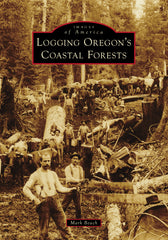
For the first 60 years of the 20th century, logging dominated the physical, economic, and social landscape of the Oregon coast. Millions of trees fell to axes and saws. Millions of dollars bought land and machines. Thousands of young men sweated in the forests and swaggered in the towns. Mills from Astoria to Brookings belched smoke and shipped lumber throughout the world. As the industry responded to its worldwide market, it went from boom to bust and back to boom. Every decade brought new technologies that meant fewer loggers could cut more trees and send them to mills faster than ever. This book, which includes historical images from museums, agencies, and personal collections, reveals the dangers and pride loggers experienced as part of their profession and captures the culture of logging as forests shrank and markets grew.
Jewish Miami Beach by Paul S. George and Henry A .Green
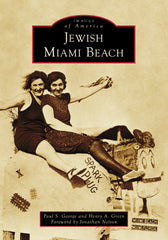
From a disregarded, forlorn island in the early 1900s to the world-famous resort and go-to place of today, Jews have played a prominent role in Miami Beach's achievements and fame. Initially consigned to a tiny enclave on the southern tip of Miami Beach, the community's Jewish population quickly expanded north, from South Beach to Golden Beach, and assumed a leadership position in nearly every phase of the city's life by the late 1900s. At every step of Miami Beach's rich history--from commerce, architecture, and banking to hospitality, real estate, and government--the Jewish community blossomed, enabling Jews to play singular roles in a drama that continues to unfold.
Old Swedes Church and Historic Site by Betsy Christopher
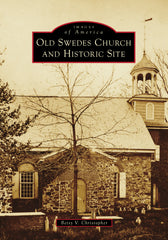
Authentic Chicago by John R. Schmidt
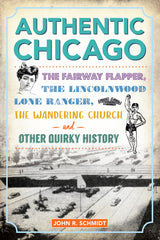
The Windy City is full of forgotten landmarks and unusual stories that rarely get the benefit of a guided tour. Meet the African-American congressman who paved the way for Harold Washington and Barack Obama, the South Side Jewish girl who became the president of a South American country, and the visiting Romanian queen who charmed the city. Learn when Chicagoans were paid to smile, how furniture sprouts on Windy City streets after a blizzard and why Smell-O-Vision seemed like a good idea. From an in-city ski resort to the nation's greatest train robbery, author John R. Schmidt offers a glimpse of the overlooked scenery of Chicago's past.
Oregon Search & Rescue by Glenn Voelz
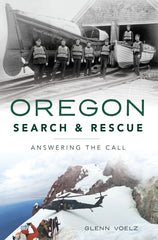
Cajun Country Chronicles by William J. Thibodeaux
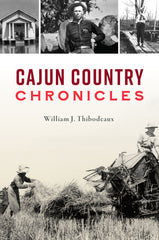
From shocking one offs to delightful immersion into the quotidian lives of Cajuns long deceased, we find ourselves with a satisfying grab bag of Cajun history. A murder becomes a case that winds its all the way to the U.S. Supreme Court. A feud erupts into a shootout on election day 1924 with three dead and four injured. One ordinary Cajun is torn between two passion—photography and railroading. Another young man rises to the rank of postmaster. Cajun music is reborn in these pages, and the university in Lafayette is founded. The legality of the Louisiana Purchase comes under scrutiny here, and communities lost to the great floor of 1927 are remembered, as is the once unthinkable banning of the French language on public-school grounds. During the yellow fever epidemic, one town tries to save itself by banning all inbound trains from NOLA. Another city in the region is befallen by a curse placed on its boundaries.
Cracker Horses and Cattle by Carol Matthews

The first horses and cattle to set foot on the North American continent stepped onto Florida land, brought by Spanish explorer Juan Ponce de Leon in 1521 just south of present day Fort Myers. The animals were abandoned, formed wild herds and would be used by different groups for food, work, trade and transportation for the next 500 years. Cattle ranching was born when Jesuit and Franciscan Friars, also known as missionaries, set up a system of missions across north and north-central Florida. The largest ranch was Rancho de la Chua, located on what is now Paynes Prairie in Alachua County. As a result of this increase in cattle production, Florida rancheros began to sell cattle to Cuba. This was the first industry to develop in the New World and would continue for the next three hundred years. By the 1960s there were only a handful of pure cracker cattle and horses left. But herds were established on state lands, preserving a living link to Florida's past.
New Jersey and the Medal of Honor by Peter Zablocki
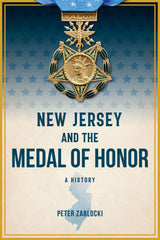
New Jersey has been credited with ninety-three honors in the state's military history. Robert Augustus Sweeney was the recipient of two non-combatant medals when he jumped into stormy waters to save a fellow sailor twice becoming one of only nineteen double Medal of Honor recipients of all time and the only African American to do so. On the infamous day of December 7, 1941, Peter Tomich, serving on the USS Utah, sprung to action when it became evident his ship would capsize from the two Japanese torpedoes, staying behind to man the fireroom to ensure the boilers were secured to prevent an internal fire and saving countless additional deaths.
Author Peter Zablocki reveals the harrowing stories of New Jersey's most valorous moments in the defense of our nation and freedom around the world.
Pelican Publishing
New Orleans City Park by Bob Becker
The Legend of Roux-Dolph the Gumbo Pot by Kelly Airhart, illustrated by Kylie Scott
My Parrain is the Loup Garou by Johnette Downing, illustrated by Heather Stanley

